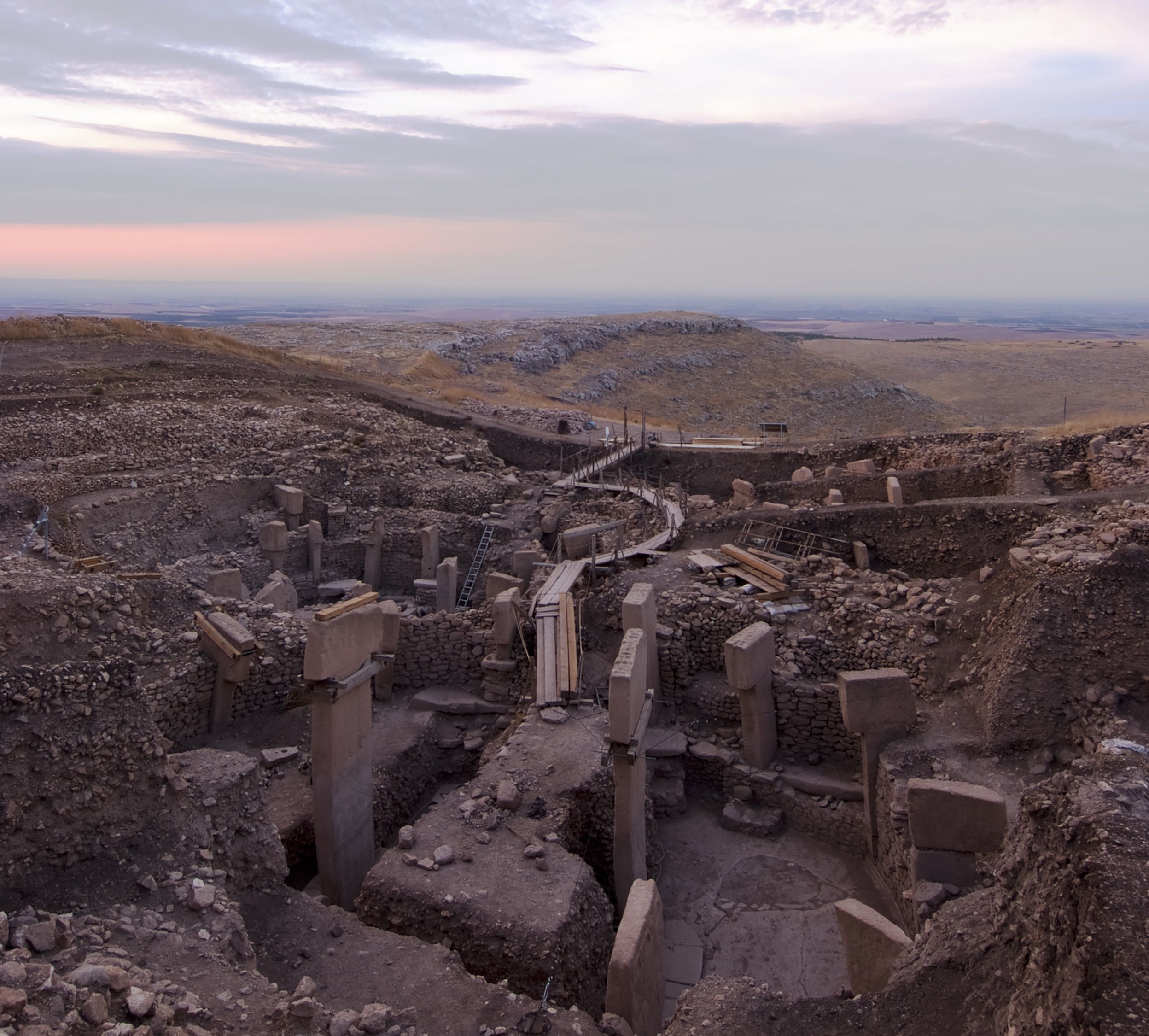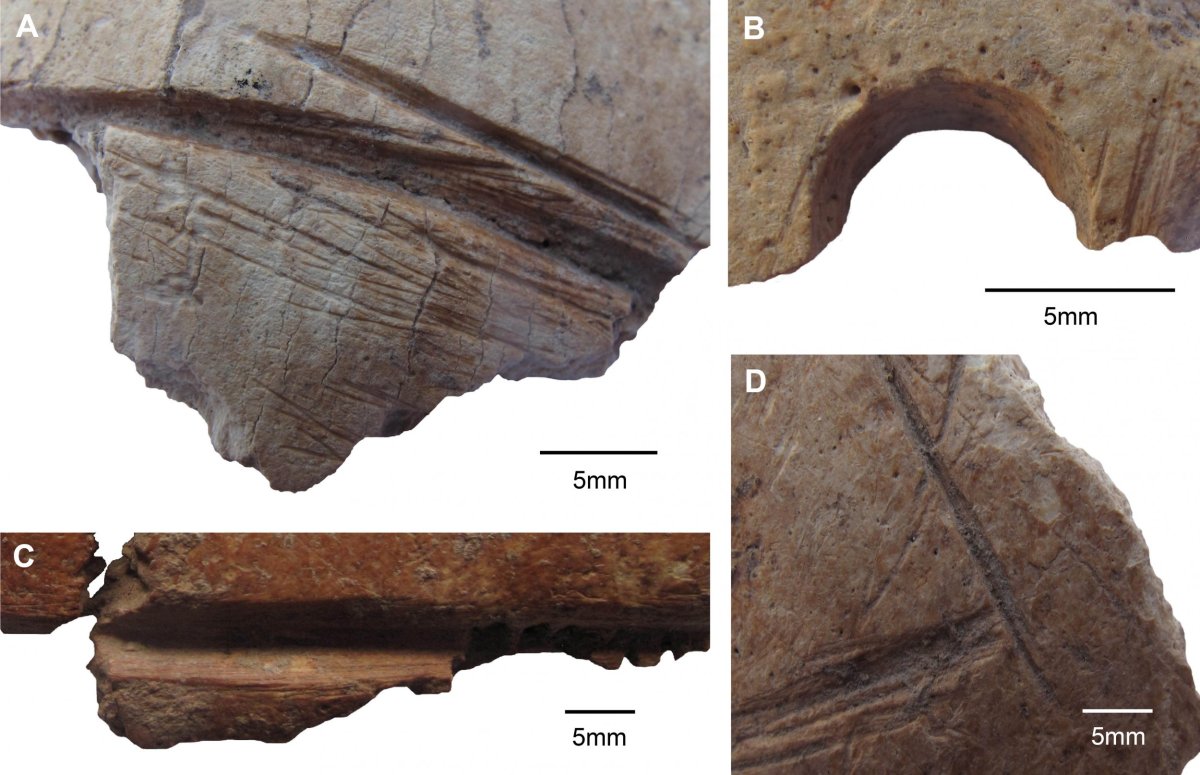
Updated | The earliest ever "skull cult" has been discovered in Turkey, with evidence indicating people living there 11,000 years ago would deflesh and carve up human skulls shortly after death for ritual purposes.
Three skulls discovered at the site of Göbekli Tepe, in the Southeastern Anatolia Region of Turkey, were found to have been carved and drilled into. A deep incision had been made along the sagittal axes—running vertically from the forehead to the back of the skull. One of the skulls also had a hole drilled into it on the top left of the cranium.
While the practice of modifying and displaying skulls for religious purposes was widespread during the Neolithic period (around 12,000 to 4,000 years ago), these skulls represent the earliest evidence of it. This potentially makes it one of the first Neolithic "skull cults"—civilizations that carried out ritual modifications to skulls after death.
Göbekli Tepe is an extremely important archaeological site. First discovered in the 1960s, it comprises of huge stone slabs that had been purposefully arranged there—a little like the U.K.'s Stonehenge, only far older. The site is thought to have been used for ritual or religious purposes, rather than domestic, meaning it is widely considered the world's first temple.
While little is known about the people who constructed the site, it is known that they were on the crux of a major change in human civilization—swapping a hunter gatherer lifestyle for a sedentary one, when people began farming and settling down in one place.
The discovery of the skulls represent the very first evidence of human presence in this area: "We've looked for years for primary burials [the first humans to be buried there] in all the cemeteries but we haven't found them," Julia Gresky, from the German Archaeological Institute, tells Newsweek. "These fragments are the first—but our research is only just beginning."
Gresky has now analyzed the skulls is the author of a new study about them, published in the journal Science Advances. Excavations at Göbekli Tepe have been going on for over 20 years, but until recently, no anthropological research work had been carried out there.
"When I started 2009 they had several boxes with bone fragments," she says. "I looked through them and made some examinations, Then I found the first of these fragments. That was really special. I'd never seen anything like at. At first I thought they [the other scientists] were playing a joke on me.
"But it turned out they were really old. That was a really big surprise. Then I tried to find comparisons in other site in the region. There are a lot of skull cults going on in the Neolithic in this area, but so far we haven't found any comparable carvings."

At present, these fragments represent the oldest ever evidence of a skull cult. "Maybe there are other cases," Gresky says. "But we looked through lots of research and didn't find it."
The researchers do not know who the skulls belonged to. One appears to be a female aged between 25 and 40, but the condition of the skull means scientists cannot be certain of the sex of any of them. There was also not enough collagen to date the bones directly. Instead, the team had to go on the circumstantial evidence in which they were found, making them around 11,000 years old.
The team believes they were carved for ritual purposes for a number of reasons. As well as being unusual incisions that analysis shows must have been made with manmade tools (rather than being gnawed by animals), one of them also had traces of red ochre, a substance known to have been used in Neolithic rituals.
"This site, it's not a pure settlement, it's much more. It's really a ritual site," Gresky says. "Lots of evidence from archaeology points to that. And that fits perfectly to our findings. We have first evidence of people doing rituals. So they made this cult at this time after they built the structures.
"The ochre was stuck to the skull and the skull was found next to where ochre was spread. Ochre in the Neolithic has ritual significance—mainly it's used in burials to cover the dead and is connected to some rituals. This underlines the special meaning of that skull."

At present the team does not know who the rituals would have been performed on, but they have two theories. One is that they were the skulls of enemies, the other that they were ancestors being honored. Analysis shows the flesh was removed from the skull and that the carvings were made just after death—the cuts were made when the bone was still elastic, but there was no sign of healing.
Gresky says the way the skulls were carved suggests it was done to display them in a certain way, rather than for decorative purposes. "In the beginning we were disappointed because these carvings were not very beautifully done. It doesn't look like they were very carefully done," she says.
"But maybe it was not the intention. In comparison with the stone art they did—all these animal depictions on hard stone—they did in a very artistic way. And skull and bone is not that hard, so if they had wanted to do something artistic, they could've done much better."

At first the team thought they could be looking at the first attempts at skull carving, but as all the incisions were the same, they believe this cannot be the case. "Maybe it was not to show the carvings to other people," Gresky says. "Another interpretation is that these carvings were meant as a track for a cord, or to fix some decoration to it. The skull is round so if you placed a cord on it, it would slip to one side, so the carving could be to fix something in place."
The scientists now hope to find more skulls. Only one part of Göbekli Tepe has been excavated, so Gresky is hopeful other examples will be uncovered. But they will have to wait until the next excavation season to do this. "We hope in next season we will find more fragments and maybe some primary burials—something with a context so we do more than just speculate. Maybe we will find something in the building where the skull is deposited. That would be fantastic. That's what we're looking for."
Ian Kuijt, Professor of Anthropology at the University of Notre Dame, Indiana, says the findings are very interesting, but the study is not without its limitations. "It's interesting," he tells Newsweek, "and it fits with existing models, but further research will be necessary to expand the exciting nature of these preliminary discoveries."
He says the main problem with the research is the small size of the dataset used: "In some ways they have a 1,000 piece jigsaw, and they have seven pieces of that puzzle. The major question is how do we use those limited number of pieces to talk about the whole picture? That's the challenge.
"They're correct in identifying the pattern, but it's a mosaic dataset. They have little pieces of skull, so they can show that some skulls are modified and make argument for some element of display, but that is somewhat tenuous because of the sampling issue.
"But the broader social interpretation of a skull cult, I'm quite cautious about.
"They don't really have evidence to talk about that because they don't have sufficient data to understand the burial practice. They're doing good research, but if you don't have human burials, it's secondary context. There's a pretty substantial grey zone and there's a degree of caution."
Kuijt says there is "no doubt" further research is needed and that the team has good preliminary information and interesting findings. "But there's an element under which while advancing our understanding, it's pointing in the direction, rather than a clear cut case of ancestor veneration," he says.
This story has been updated to include quotes from Ian Kuijt.
Uncommon Knowledge
Newsweek is committed to challenging conventional wisdom and finding connections in the search for common ground.
Newsweek is committed to challenging conventional wisdom and finding connections in the search for common ground.
About the writer
Hannah Osborne is Nesweek's Science Editor, based in London, UK. Hannah joined Newsweek in 2017 from IBTimes UK. She is ... Read more
To read how Newsweek uses AI as a newsroom tool, Click here.








